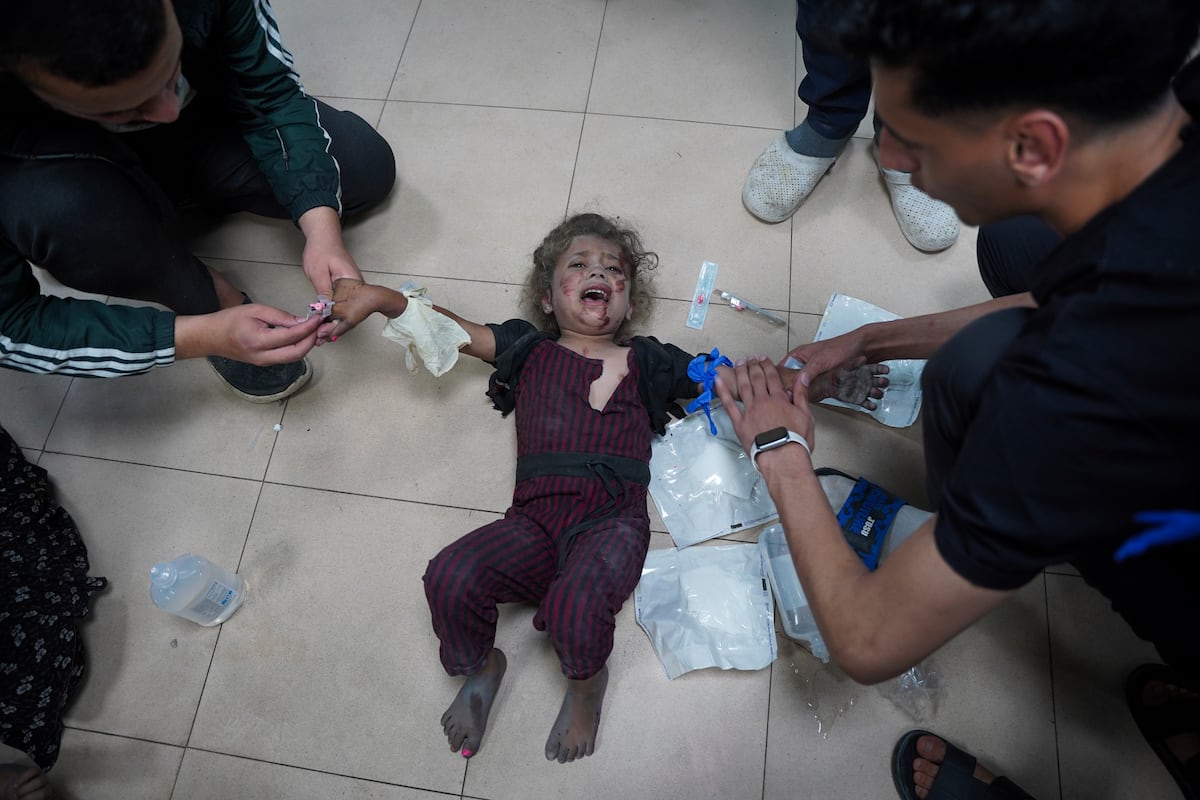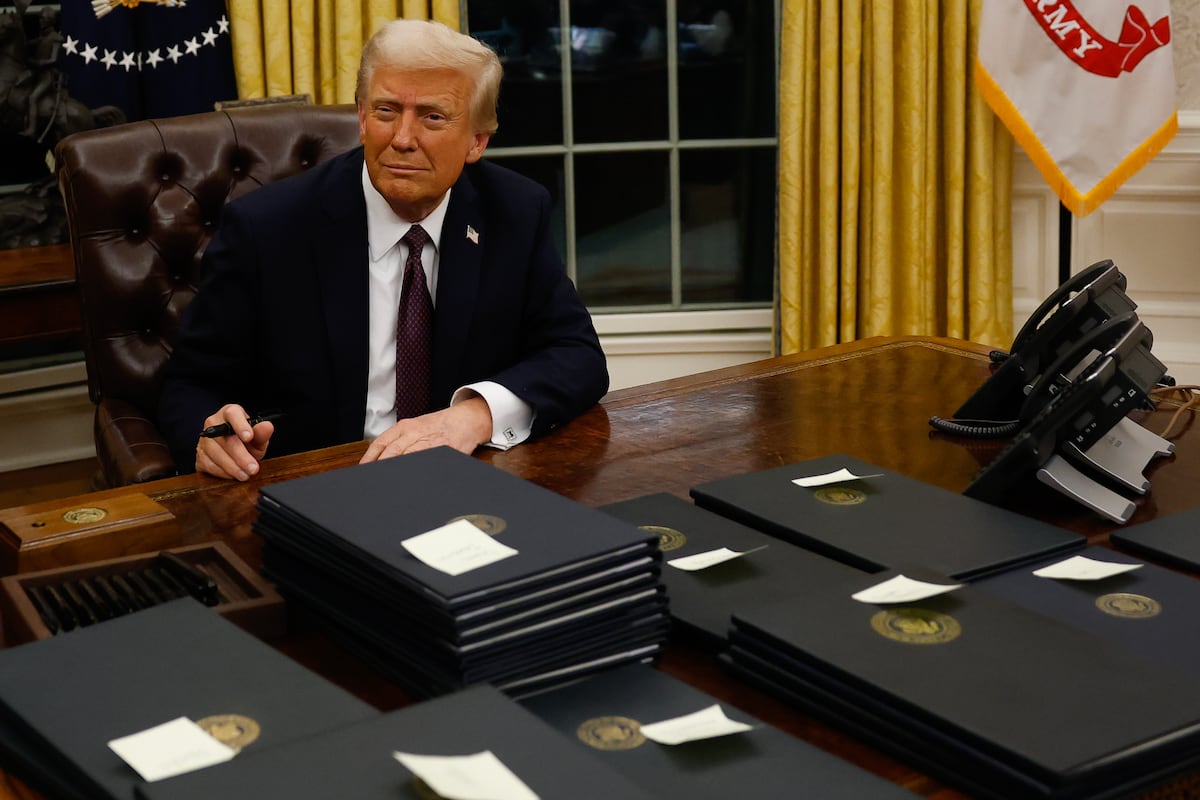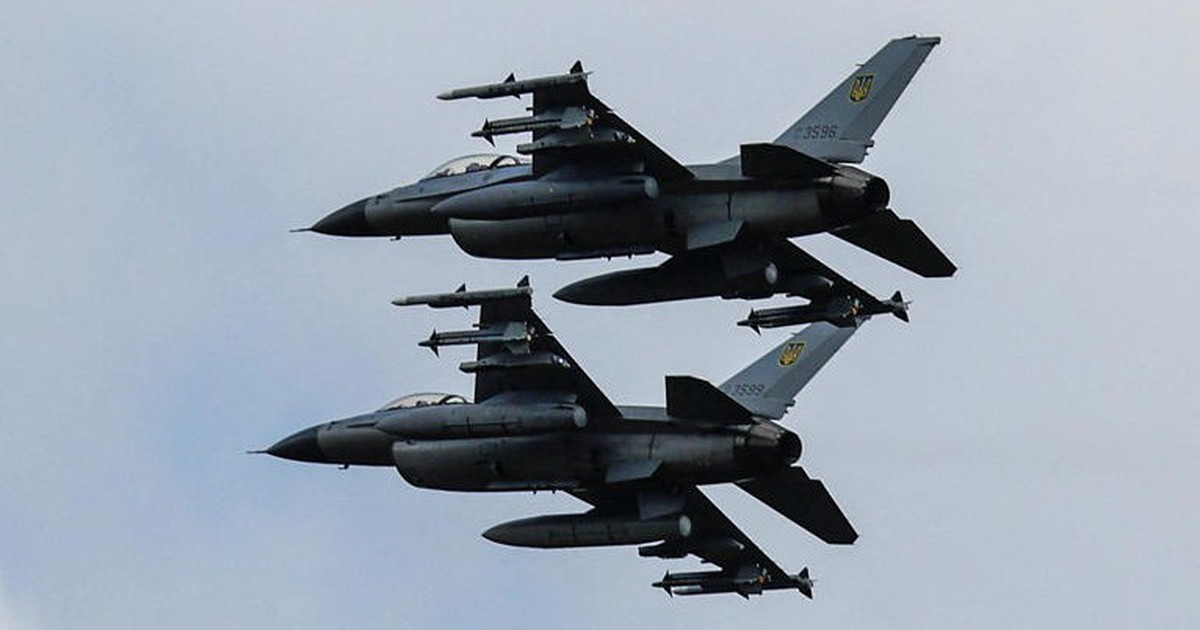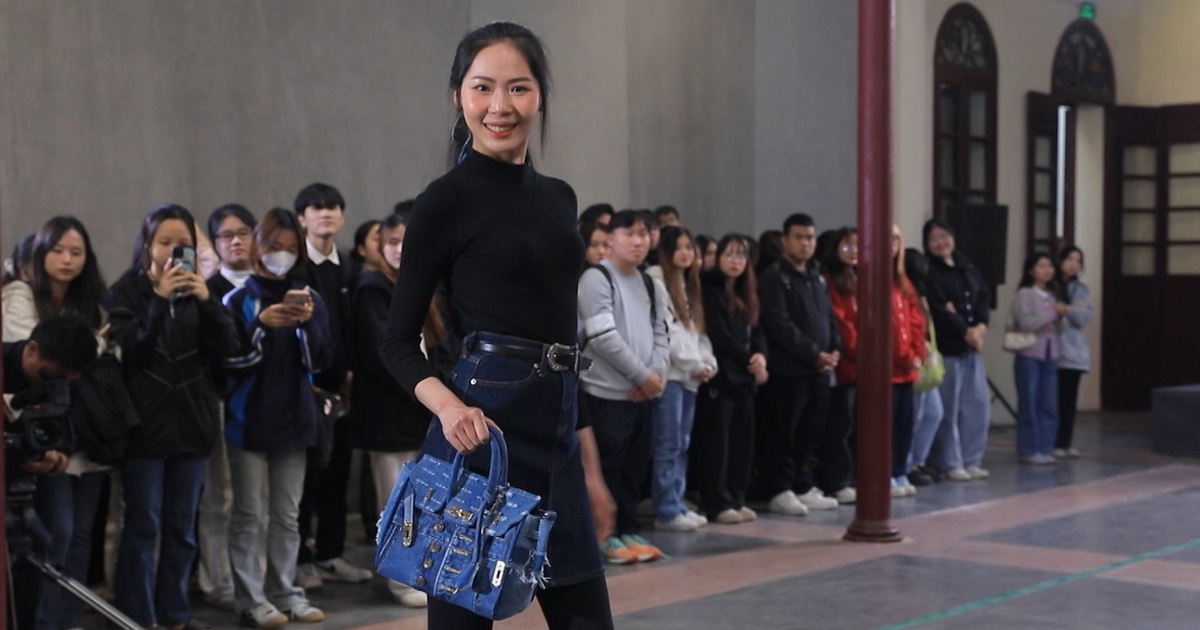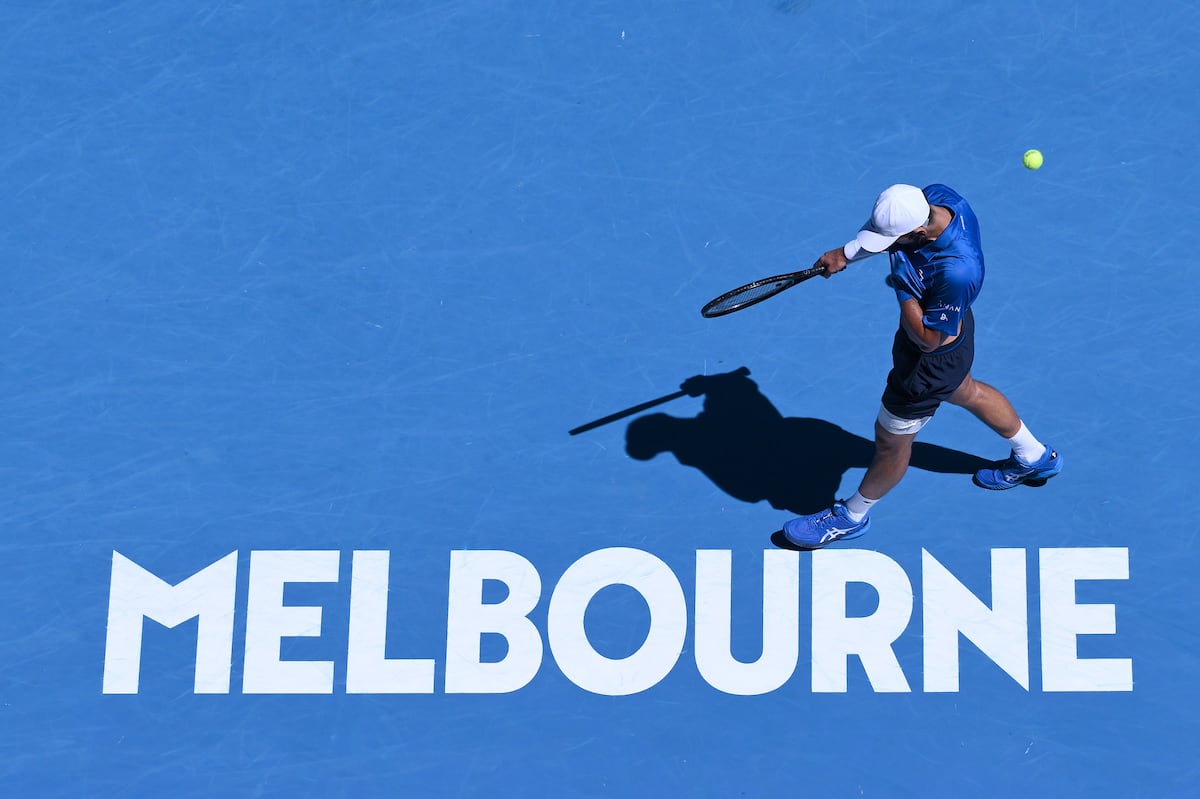Of the children hit by an Israeli sniper that Dr. Fozia Alvi’s team saw during her last stay in Gaza, only two were still alive. It would be more accurate to say that his heart was still beating. They had been shot in the brain, she recalled by phone from Canada. They lay “like vegetables” in the European Hospital, in the south of the Palestinian territory, connected to a respirator. “They would be 11 or 12 years old,” says this health worker who spent two weeks working in the Strip in February. Only those two children were still alive because sniper shots into the small body of a child are almost always a death sentence, explains the doctor. It is almost impossible to survive “such wounds.” The majority of those injured minors in Gaza “do not reach the hospital. They die instantly and their families bury them immediately.”
The deaths of children in possible extrajudicial executions by snipers are not one of the main causes of death of the 14,000 minors who, according to Unicef, have perished in the seven months that the Gaza war has lasted, more than a third of the almost 35,000 fatalities of the conflict calculated by the Ministry of Health of the territory governed by Hamas. Most of these children have perished from bombings and explosions, according to the United Nations and NGOs such as Doctors Without Borders (MSF). Also buried by destroyed buildings, by serious trauma, by penetrating shrapnel, by burns, infections and by pure hunger, due to Israel’s serious restrictions on the entry of food into the territory. Of the 32 cases of deaths due to malnutrition that the health authorities of the Strip reported at the beginning of April, 28 were minors. Almost half of the 2.3 million Gazans are under 18 years old. The one in Gaza is, for Unicef, “a war against children.”
Child victims of snipers are a “new trend,” explains Marie-Aure Perreaut, MSF emergency coordinator, by phone from France. A sinister development that, if confirmed, would constitute another war crime that would be added to the long list of those that Israel is already suspected of having committed and that have led the UN International Court of Justice to consider it “plausible” that that country is committing genocide in Gaza. Children embody the essence of a civilian. This is what the Geneva Conventions consider, which grant them general protection, due to their status as civilians, and reinforced protection, because they are part of a vulnerable group.
In official Israeli discourse, those killed in the enclave are either “terrorists” or are included in the euphemism of “collateral damage,” without taking their age into consideration. Both the Israeli army and the Government of that country have stated on successive occasions that they are doing “everything possible” to reduce civilian deaths in Gaza to a minimum and have systematically denied attacks against them. However, in mid-February, a group of UN experts accused that country’s army of attacking Palestinian civilians, including minors, even as they tried to escape combat zones waving white flags. On October 14, the Israeli head of state, President Isaac Herzog, said in a press conference that “there were no innocent civilians in Gaza.”
Evidence abounds that the Israeli military may be intentionally shooting at children in Gaza—or at least opening fire on crowds of children. First, from the Palestinians themselves, but also from the doctors who have treated these children. Like Dr. Alvi, who believes that “the most likely hypothesis” is that the two children wounded by snipers she saw on her mission in Gaza were shot on purpose. To begin with, she points out, because of the precision of some shots that entered and exited “cleanly” from the skulls of the little ones. Also because both minors had been hit in the brain. “You have to aim very well to shoot a person and hit the heart or head,” she says.
Another element that suggests that these shots could constitute extrajudicial executions is that children wounded by snipers, when they arrive at the hospital alive, do so in groups. It is not a single minor, but several, also shot in the same places and often killed with a single shot. American plastic and reconstructive surgeon Irfan Galaria, who also worked at the European Hospital in Gaza, told the newspaper Los Angeles Times how a group of parents arrived at the emergency room with their children injured by gunshots. They were small, some 5 years old. Their families were trying to return to their homes in the southern town of Khan Yunis when they were wounded. All of them, without exception, the doctor says, had been shot in the head. None survived.
Join Morning Express to follow all the news and read without limits.
Subscribe
“Some of the best shooters in the world [los israelíes] “They don’t accidentally shoot a child twice in the head and once in the abdomen,” he summarized in April to the media. Democracy Now, shortly after returning from Gaza, American surgeon Mark Perlmutter. This doctor alluded to the “overwhelming impression” he had that Israel is committing “genocide” in the Palestinian territory. If these cold-blooded executions of children are proven—There are even cases of months-old babies.— the dehumanization of the Palestinians by Israel would be confirmed, the ultimate demonstration of which for humanitarian organizations is the almost 35,000 deaths in the enclave.
Pain and death
In this war in which Israel, in addition to killing at least 14,000 children, has wounded another 12,000, according to Unicef, the atrocious but painless death suffered by these minor victims of snipers seems almost merciful; a lesser evil compared to the agony often suffered by children who die in bombings; due to the explosions, shrapnel, amputations and burns that the doctors consulted for this report describe as “unimaginable.” Some of these minors die after briefly surviving the impact of missiles and unguided bombs weighing up to 900 kilograms. And they do it without morphine and without painkillers. The virtual destruction of the Gazan health system and Israel’s restrictions on the entry of anesthetics, painkillers and other medications sometimes condemn them to expire without anyone being able to alleviate their pain.
Tanja Haj-Hassan is a pediatric intensivist who participated in a medical mission in March by the NGO Medical Aid for Palestinians to one of the few hospitals still operating in the Strip, the Martyrs of Al Aqsa, in Deir al Balah, in the center Of the territory. The pediatrician believes that minors “are, in one way or another, a target in this war,” not only because of the dead children, or those who suffer physical consequences. Even the minors who have so far emerged physically unscathed witness what she defines as “horror.” Especially those who have survived the bombings.
“All the cases were horrible,” recalls the pediatrician. “We received a child who had part of his face blown off. His sister was in the next bed but he kept asking ‘Where is my sister? She had 96% of her body burned and she was so disfigured that the boy did not recognize her. Her parents and all of her other siblings had died in the same attack. That sister died two days later. When I saw him the next day she told me that she had the feeling that I had not told her that her entire family had been murdered: ‘I wish I had died too,’ she exclaimed. When you are a child, it is impossible to assimilate that all the people you love have died,” says this pediatrician.
The impact on mental health that this doctor alludes to is the invisible wound that will mark the younger generations of Gaza in a conflict that is breaking records regarding crimes against children.
One is that of mutilated minors. Until January alone, a thousand children had suffered the amputation of one or more limbs, according to Unicef. Sometimes “without anesthesia,” Gazan intensivist Mohammed El Najjar confirms via WhatsApp from Gaza. In January, Mexican surgeon Aldo Rodríguez described cases of one-year-old babies amputated at the groin, in a testimony released by MSF. Other children have been blinded and disfigured by shrapnel and burns.
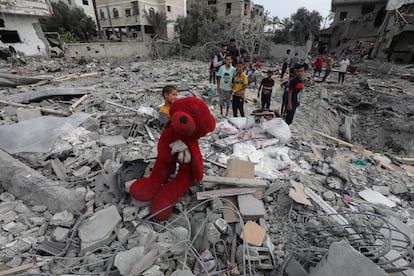
Doctors working in Gaza are witnesses of this pain. Gazan health workers also suffer it firsthand. Like Dr. Najjar. This doctor tells how one of his seven-year-old patients, “with third-degree burns,” would wake up at night crying: “She said, Help me! “Help me!” he remembers. The doctor had no painkillers. The worst experience this specialist has ever had came when, one day, while he was on duty, his 14-month-old daughter was admitted with a serious skull injury. Israel had bombed her house.
In Gaza, children don’t just die. Sometimes they do it without a name. There are children who have arrived dying at hospitals after a bombing killed their entire family and neighbors; to everyone who knew his identity. They were later buried in common graves.
In Gaza there are those who think that those children who lie in unmarked graves are among the lucky ones: they no longer suffer. Many of the minors who survive the attacks are left alone. Like a seven-month-old baby who was taken to the emergency room of Al Aqsa hospital, “wrapped in a blanket full of blood, urine and feces, with burns and a piece of her skull torn off,” recalls Marie-Aure Perreaut. An Israeli bombing had killed 30 members of her family. In the Strip there are 17,000 children separated from their families, according to a Unicef estimate, some of them because they have been orphaned. Some of these minors survived the Israeli attacks but with serious consequences. Aldo Rodríguez, the MSF surgeon, remembered seeing these amputee children “alone and desolate,” who stay in hospitals after being discharged because “they have nowhere to go.”
Follow all the international information on Facebook and xor in our weekly newsletter.
.
.
_

